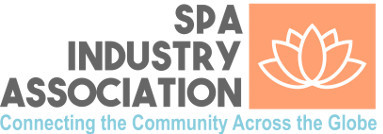For those with chronic or temporary pain, staying active and keeping the joints moving can offer a lot of relief. It can provide far better results than staying still. It has been estimated that, across the world, tens of millions have chronic symptoms.
People who have temporary aches or soreness due to an injury can have their quality of life impacted by the discomfort.
Additionally, exercise supports optimal health and longevity. The Centers for Disease Control and Prevention suggests adults do at least 150 minutes of moderate-intensity aerobic activity each week. So what are some of the top relieving exercises to try? The following list includes specific examples of workouts and why they could be beneficial for you.
Pain-relieving activities
You don’t necessarily need to seek out complicated programs or expensive classes all the time to obtain benefits. Regular activities many people already enjoy can relieve soreness and aches. These can include things like walking, swimming, and yoga.
These gentler options work the body without straining joints and tissue. Try walking a few times a week, swimming every so often, and doing some yoga exercises regularly in addition to the other types of activities outlined below. Incorporate different moves to work different areas of the body in a variety of ways.
Being physically active on a regular basis has been shown to improve people’s health, decrease their risk for cardiovascular disease, and improve mental health – which can definitely degenerate when suffering from chronic pain. Many health insurers are now providing incentives to help their members get active and even include therapy and physical therapy in their offering, so you may even save some money while getting fit and healthy.
Floor-based exercises
Getting down and working out on the floor allows those with aches to address specific areas. While walking and swimming utilize just about every part of the body, they don’t provide the benefit of strengthening specific regions.
What’s more, one doesn’t need expensive gym equipment; an exercise mat will get you going. Examples include pelvic tilts to reinforce pelvic floor muscles, bridges or hip raises, and planks. A basic bridge, generally speaking, can boost the gluteus muscles and hamstrings while facilitating core stability by focusing on the abdomen, lower back, and hips. For many people, planks are a whole-body exercise that works out the chest, arms, back, legs, and bottom.
Use a stability ball
If working off the ground seems intimidating, try a large fitness or stability ball. Fitness balls are cost-effective tools that can open up a whole new world of core-strengthening moves. Building a stronger core, in turn, can have a positive impact on soreness and pain, partly by encouraging a healthful posture and improving balance.
Examples of core-building movements are obliques, half crunches, single leg and hip bridges, hamstring curls, and thoracic extensions. Note stability balls come in different sizes and it’s important to choose the right-sized product for your height and size.
Some tips for success
It can be tempting to get started right away to see how much getting active help to reduce aching and hurt. However, individuals who haven’t exercised consistently might want to start slowly and gradually build up their program with a variety of activities. Those who already see a physiotherapist or healthcare provider can ask them about how to get started. Your doctors can provide individualized advice based on the symptom type, affected regions, and lifestyle needs.
Also, become aware of the difference between the good and the bad. Normal tenderness that follows a workout session could be good. In contrast, harsher, sharper symptoms associated with overworking tissues are likely bad. It’s usually fine to keep exercising through the former, but be alert to the bad variety and stop and take a break to prevent inflammation and injury. Generally, it’s ideal to take rest days between workouts.
For many individuals, it can be worth it to invest in compression gear. Research shows compression gear like tops, leggings, socks, and other items can lower fatigue and injury, by minimizing muscle oscillation during movement. They can also support better recovery outcomes after activity, by facilitating lactic acid removal and reducing pain-related issues. Other benefits include relaxation, stimulating blood flow, and promoting healing from injuries.
Summing up
Temporary and chronic pain is a reality for millions around the world, and these conditions can affect the quality of life whilst imposing a healthcare burden. In severe cases, it can restrict mobility, which then further compromises strength and well-being.
Although remedies like medication can lessen symptoms, it’s possible to mitigate the impacts by working out and choosing a range of workouts to not only maintain but possibly expand the range of motion and flexibility.
Getting fit can enhance the core and other areas for better posture and balance. It’s associated with enhanced general health outcomes, psychological well-being, and a stronger immune system. There’s no downside to staying active, but it’s important to avoid overworking and straining joints.



